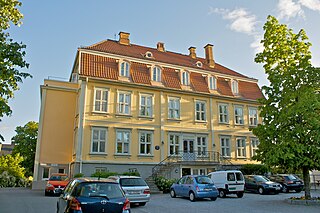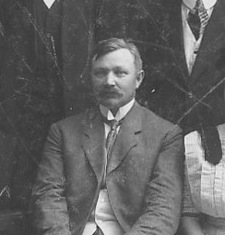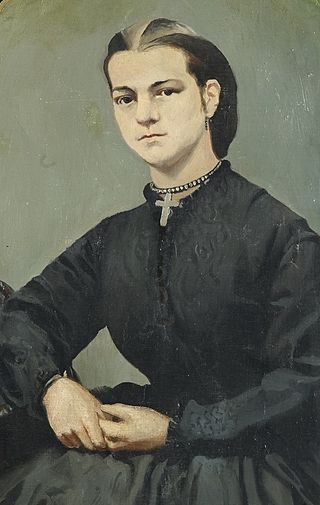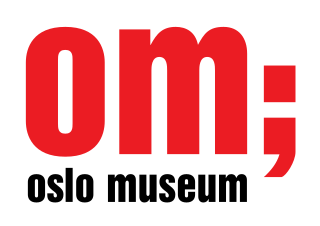
Frogner is a residential and retail borough in the West End of Oslo, Norway, with a population of 59,269 as of 2020. In addition to the original Frogner, the borough incorporates Bygdøy, Uranienborg and Majorstua. The borough is named after Frogner Manor, and includes Frogner Park. The borough has the highest real estate prices in Norway.

Frogner Manor is a manor house and former estate in today's borough of Frogner in Oslo, Norway. The estate comprised most of the modern borough of Frogner, which has been named after the estate, and Frognerseteren with parts of the Nordmarka forest (Frognerseterskogen). The remaining part of the estate is now the site of the Frogner Park, with the manor house found in the south of the park and the Vigeland installation in the park's centre. The 18th century buildings on the grounds now house the Oslo City Museum.

Oslo City Museum is a department of Oslo Museum in Oslo, Norway since 2006. The museum is located at Frogner Manor in Frogner Park (Frognerparken).

Frognerseteren is the end station of the Holmenkollen Line of the Oslo Metro, located in the Marka section of Oslo, the capital city of Norway. It's the northernmost station in Oslo Metro, and is the station after Voksenkollen. The line to Frognerseteren was completed on 16 May 1916. The station has two platforms which, like other stations on the Holmenkollen Line, only accommodate two-car trains. The elevation of the station is 469 meters (1,539 ft) above sea level, the highest of all the stations in Oslo. The elevation difference between this station and the lowest in Oslo Metro (Stortinget), 478 meters (1,568 ft), is the highest elevation difference within a metro network in the world.

Korketrekkeren is a tobogganing track and former bobsleigh and luge track in Oslo, Norway. The tobogganing track runs between Frognerseteren and Midtstuen and is operated as a public venue by the municipality. Return transport to the top of the hill is undertaken by riding the Oslo Metro's Holmenkollen Line. Tobogganing in the area started in the 1880s, with several roads being used during winter evenings. Auto racing took place in the hill in 1921 and the following year it saw its first luge tournament. The first major tournament was the FIL European Luge Championships 1937. Tobagganing also took place in the nearby Heftyebakken, but from 1950 Korketrekkeren became the sole tobogganing hill and Heftyebakken was used for cross-country skiing.

Frogner Park is a public park in the central West End borough of Frogner in Oslo, Norway. The park is historically part of Frogner Manor and is Oslo's largest park, open to the public at all times. It includes the manor house which is the seat of Oslo Museum, the nearby Henriette Wegner Pavilion, the Vigeland installation of sculptures created by sculptor Gustav Vigeland, Frogner Baths, Frogner stadion, Frognerparken Café, the restaurant Herregårdskroen and the largest collection of roses in the country with 14,000 plants of 150 species. Frogner Park is the most visited tourist attraction in Norway.
Elisenberg station is an unfinished railway station within the Oslo Tunnel on the Drammen Line in Oslo, Norway. The ghost station was partially built during the construction of the tunnel between 1971 and 1980, but has never been put into use. It is located between Nationaltheatret Station and Skøyen Station, at Elisenberg in Frogner. A 220-meter (720 ft) long center platform and part of the access way has been built, but never completed. While the station initially was not put into use because of lack of funds to complete it, it is now unlikely that it will ever be completed, as the need for a station has disappeared and an opening would need a large investment of funds.

Vika is a neighborhood in the Oslo city center in Norway. It is located between the Royal Palace, Oslo, Oslofjord, Aker Brygge, Pipervika, Slottsparken, Oslo City Hall, Oslo Concert Hall and borders on the north with Karl Johans gate, the main street of the city of Oslo which hosts Norwegian Parliament Building as well as known for being the hub to major Scandinavian brands, bars and hotels including Grand Hotel, the annual venue of the winner of Nobel Peace Prize and various state dignitaries.

Filipstad is a neighborhood in the Frogner borough in Oslo, Norway. It serves both as a major container port and ferry terminal for the city. The Oslo-Kiel ferry docks by the Hjortneskaia at Filipstad.

Briskeby is an area in the borough Frogner in Oslo, Norway.

Jacob Benjamin Wegner was a Norwegian business magnate. He was one of the country's leading mining magnates as the director-general and co-owner of Blaafarveværket, and also had significant interests in other mining and timber companies.

Elisenberg is a neighborhood in the Frogner borough in Oslo, Norway.
Tryvandshøiden was a planned station on the Holmenkollen Line in Oslo, Norway. It was planned by the company Tryvandsbanen in the early 1910s and partly constructed in 1916 at the end of a single-tracked line from Frognerseteren. A red signalman's house named "Norden" was the station's only facility. Passenger trains never served the station, and the tracks from Frognerseteren to Tryvandshøiden were removed in 1939. The signalman's house was not demolished. In 1993, 2004 and 2008, proposals were made to re-open the station so that it would be more convenient for Oslo residents to use the Tryvann Ski Resort. However, these proposals were all rejected by the operator Oslo Sporveier on the grounds that the extension would be too expensive.

Theodor Christian Petersen Haagaas was a Norwegian mathematician, mathematics educator and private school owner.

Anna Henriette "Jette" Pauss, née Anna Henriette Wegner, was a Norwegian teacher, editor, humanitarian and missionary leader and estate owner. With her husband Bernhard Pauss, she was a major figure in girls' education in Norway in the 19th and early 20th centuries. She served as headmistress of the country's preeminent educational institution for girls and women, Nissen's Girls' School, and was extensively involved in other schools and organizations. She was also editor of the journal Santalen and one of the key leaders of the Norwegian Santal Mission that ran schools, hospitals and social projects in India. She was the youngest daughter of mining magnate Benjamin Wegner and banking heir Henriette Wegner, and was one of the co-owners of Hafslund Manor with two of her siblings until 1894.

Oslo Museum is a museum dedicated to the history and culture of Oslo, Norway. The museum is headquartered at Frogner Manor in Frogner Park, together with two of its departments; Oslo City Museum and Theatre Museum.

Henriette Wegner, née Henriette Seyler, was a Norwegian businesswoman and philanthropist. She was a member of the Hanseatic Berenberg banking dynasty of Hamburg and moved to Norway in 1824 when she married the mining magnate Benjamin Wegner. She was briefly a co-owner of Berenberg Bank, and became one of the wealthiest women of Norway on her husband's death as the main owner of one of the country's largest forest estates.

Frogner Manor is an oil on canvas painting by the Norwegian artist Johan Christian Dahl, executed in 1842, now in a private US collection. It shows the eponymous Frogner Manor and its surrounding landscape gardens.

Benjamin Wegner's sundial is a sundial from around 1837 located in Frogner Park, Oslo, right in front of the Frogner Manor buildings, which today house Oslo City Museum. It was built for mining magnate Benjamin Wegner, a co-owner and the director-general of Blaafarveværket—Norway's largest mining company—after he took over Frogner Manor in 1836. Wegner had a grand oval driveway built in front of the main building with a sundial in the middle of the lawn. The sundial is constructed as an open globe, where the meridians cast a shadow on sunny days onto the inner part of the globe, hitting the inside of the equator line and thus showing the time, specifically the astronomical solar time. Odd Gunnar Skagestad wrote in 2020 that the nearly 200-year-old sundial is greatly neglected and called for efforts to preserve it. It is one of two sundials in Frogner Park, alongside Gustav Vigeland's sundial from ca. 1930. The nearby Henriette Wegner Pavilion commemorates his wife and their 1824 wedding in her native Hamburg.

The Sundial is a sculpture that is part of the Vigeland installation in Frogner Park in Oslo, created by Gustav Vigeland. It is a sundial that stands on a pedestal with granite reliefs between the Monolith and the Wheel of Life. The sundial dates back to around 1930. It is one of two sundials in Frogner Park, alongside Benjamin Wegner's sundial in front of Frogner Manor.


















